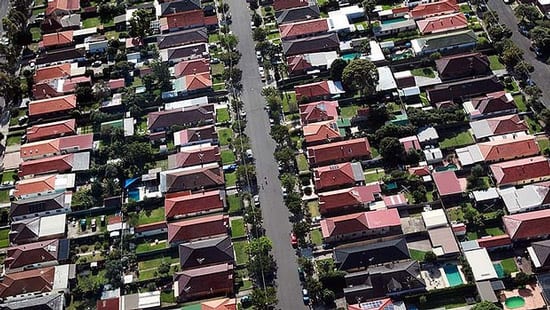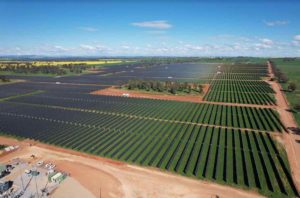Covid has taken lives and it has taken livelihoods. We desperately need jobs to lift our economy out of its current deep recession.
At the same time, we also find ourselves on the brink of another global challenge – climate change.
It makes sense to look for ways to do both – create jobs and bring down emissions.
If we are to answer the calls of our climate scientists in the same way we have answered the calls of our health scientists, we will need to put the decade of climate change warfare behind us.
We need to find practical solutions where politics is put aside for policies that create jobs and are good for our environment.
A lot of construction jobs in Australia are on the brink of disappearing. According to the Master Builders Association, the building industry is ‘facing a bloodbath’.
Meanwhile, in Australia, our buildings are some of the worst emitters of greenhouse gases. Up to a quarter of Australia’s emissions are released by our buildings with 12% coming from our homes.
Instead of the underutilised ‘HomeBuilder’ policy that Scott Morrison announced to subsidise expensive renovations, the Government should have more ambitious and useful goals for spending hundreds of millions of dollars to stimulate construction jobs.
Social housing is crucial but that is a separate conversation.
Instead of subsidising expensive renovations, the Federal Government should be making Australian buildings more energy efficient, improving design standards and creating jobs in the process.
Australia’s level of energy efficiency is very low by international standards. The American Council for an Energy Efficient Economy’s ‘International Energy Efficiency Scorecard’ ranks Australia 18th in the world for overall energy efficiency, and 22nd in terms of industrial energy efficiency, just behind Russia.
We need to heed the advice of experts such as the International Energy Agency and prioritise energy efficiency to bring down emissions and create jobs.
A recent report by the Australian Sustainable Built Environment Council found that:
Buildings present a significant – and largely untapped – opportunity for an energy efficiency driven rebound. As governments move to mobilise the sector, support for energy efficient buildings can provide an effective boost of economic activity and increased labour demand, while delivering on a number of policy objectives.
Benefits range from labour intensive projects that are rooted in local supply chains to improved energy affordability for consumers, reduced stress on the electricity network and a least cost pathway to decarbonisation.
Put simply, making Australia more energy efficient will save households money, be good for the environment and create jobs.
We have made big leaps on this policy before. In 2004, the Victorian Bracks Labor Government introduced a 5 Star Energy Standard for residential buildings.
At that time, Victoria’s decade-old insulation regulations were pitched at a nominal three-star level; while the Building Code of Australia had yet to even address energy efficiency.
Despite vehement opposition from the housing industry, the roll out of the 5 Star Standard proceeded smoothly.
Not only did the predicted disruption of the local housing market not eventuate, but the government’s policy objectives for reducing emissions and energy savings were achieved at a lower cost to individual home buyers than originally forecasted.
The housing industry rapidly and efficiently adapted to the new performance based 5 Star requirements.
Consequently, each year since 2004, over 50,000 fortunate Victorian homebuyers and renovators have enjoyed the benefits of more comfortable dwellings with lower operating costs and potentially increased capital values.
Since that breakthrough, the National Construction Code followed Victoria’s lead in adopting 5 Star residential energy provisions in 2006; then raising the bar to 6 Stars in 2009.
Subsequently, the appetite for ongoing reform of NCC residential energy provisions has sadly languished – in stark contrast to progressive reforms around national building energy standards implemented in the USA, UK and European jurisdictions on a regular basis.
Yet the case for continued reform of building standards, in conjunction with complementary policies to encourage the uptake of energy efficient building designs by owners, designers and builders, would now seem to be stronger than ever.
A recent study by Curtin University confirmed that well-enforced building standards are important piece of climate policy.
What could be better than creating hundreds of sustainable jobs in the building industry; and delivering a new wave of comfortable, economical, low carbon homes?
These improvements in building energy performance do not need major technological breakthroughs for delivery – just carefully thought out design and construction methods.
We didn’t get everything right at the last election, but our comprehensive policy on energy efficiency would have made a real difference.
It may not have been the most high-profile policy but it is exactly the sort of thing Australia should be committing to.
Right now, with the Covid-19 pandemic demanding we stay at home and limiting the work we can do, we need a plan to get out of this economic disaster zone.
And we need a plan to deal with the other big scientific dilemma that is before us.
The good news is our environment interests line up with our economic interests. And with a bit of planning we can make our buildings more efficient and create thousands of jobs in the process.
Josh Burns is the Federal Labor Member for Macnamara.
See also his previous article: Renewables will power Australia’s economic growth









